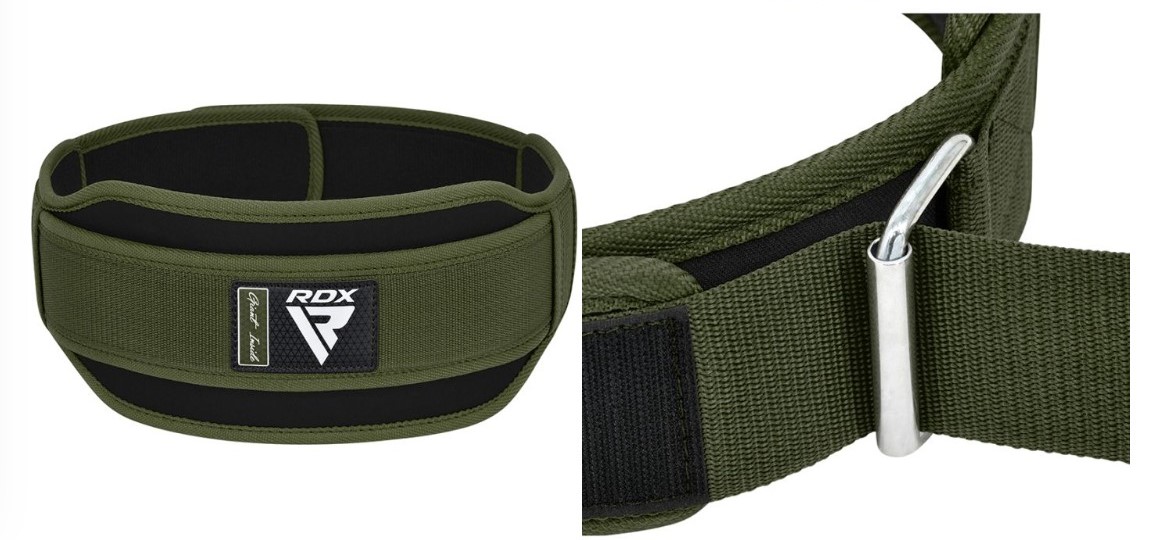Introduction to Weightlifting Belts
In the realm of weightlifting, where every lift counts and every ounce of strength matters, the significance of proper gear cannot be overstated. Among the essential tools in a lifter's arsenal, weightlifting belts stand out as indispensable aids in the pursuit of greater strength, stability, and safety.
From humble beginnings to modern innovations, these belts have evolved alongside the sport, cementing their place as indispensable companions on the journey to strength mastery.
How Weightlifting Belts Work
The biomechanics behind weightlifting belts are fascinating yet straightforward. When wrapped snugly around the waist, these belts act as a supportive brace, effectively increasing intra-abdominal pressure.
This pressure serves as a stabilizing force for the spine during heavy lifts, reducing the load on the lower back and allowing for more efficient force transmission from the legs to the barbell. Additionally, wearing a belt has been shown to enhance muscle activation in the core, further reinforcing its role in promoting safe and effective lifting mechanics.
Types of Weightlifting Belts
Weightlifting belts come in a variety of styles and materials, each with its own set of benefits and considerations. Traditionalists often favor leather belts for their durability, classic appearance, and reliable support.
Conversely, nylon belts offer a lightweight and flexible alternative, ideal for those seeking mobility without sacrificing stability. For lifters prioritizing convenience, Velcro belts provide a blend of adjustability and support, making them popular choices for quick transitions between sets.
Benefits of Using Weightlifting Belts
The benefits of incorporating weightlifting belts into one's training regimen are manifold. Firstly, these belts provide invaluable support during compound lifts such as squats, deadlifts, and overhead presses, allowing lifters to lift heavier weights with greater confidence and control.
By reducing spinal loading and distributing force more evenly throughout the body, weightlifting belts play a crucial role in injury prevention, safeguarding against the strains and stresses of heavy lifting. Moreover, the psychological boost provided by wearing a belt should not be underestimated, as the added sense of security and stability can empower lifters to push past their perceived limits and achieve new personal bests.
How to Choose the Right Weightlifting Belt
Selecting the perfect weightlifting belt requires careful consideration of several factors. Material choice is paramount, with leather and nylon offering distinct advantages in terms of durability, comfort, and aesthetics. The width and thickness of the belt should align with the lifter's body type and lifting style, providing ample support without impeding range of motion.
Buckle type is another crucial consideration, with options ranging from traditional single prongs to more advanced lever mechanisms, each offering varying degrees of adjustability and security. Finally, ensuring a proper fit is essential, as a poorly fitting belt can compromise both comfort and effectiveness during lifts.
Proper Technique for Using Weightlifting Belts
While wearing a weightlifting belt may seem straightforward, mastering the proper technique is key to maximizing its benefits. Positioning the belt correctly around the waist, just above the hip bones, ensures optimal support for the lower back and abdominal muscles.
When tightening the belt, it's important to achieve a snug yet comfortable fit, allowing for sufficient intra-abdominal pressure without restricting breathing or movement. Incorporating proper breathing techniques, such as the Valsalva maneuver, further enhances stability and control throughout the lift, ensuring a safe and effective performance.
Common Misconceptions about a Weightlifting Belt
Despite their widespread use and proven benefits, weightlifting belts are often subject to misconceptions and misinformation. One common myth is that wearing a belt weakens the core muscles over time, leading to dependency and decreased stability.
However, research has shown that properly worn belts can actually enhance core activation by providing a tactile cue for bracing and stabilizing the spine. Additionally, concerns about belt-related injuries, such as herniated discs or muscle strains, are largely unfounded when belts are used responsibly and in conjunction with proper lifting mechanics.
The Role of Weightlifting Belts in Strength Training
Weightlifting belts play a multifaceted role in strength training, offering both immediate support during heavy lifts and long-term benefits for performance and injury prevention. By facilitating progressive overload through the ability to lift heavier weights safely, belts serve as invaluable tools for strength development and muscle growth.
Furthermore, by promoting proper form and technique, they help instill good habits that carry over into all aspects of training, from squats and deadlifts to accessory exercises and beyond. Whether preparing for a powerlifting competition or simply striving for personal improvement, incorporating a weightlifting belt into one's routine can make a substantial difference in both results and longevity in the sport.
Maintenance and Care of Weightlifting Belts
To ensure the longevity and effectiveness of a weightlifting belt, proper maintenance and care are essential. For leather belts, regular cleaning with a damp cloth and conditioning with leather-specific products help prevent dryness and cracking, preserving the belt's suppleness and integrity.
Nylon belts can be hand washed with mild detergent and air dried to remove dirt and sweat buildup, ensuring optimal performance and comfort. When not in use, storing the belt in a cool, dry place away from direct sunlight helps prevent deformation and degradation of materials, prolonging its lifespan and usability for years to come.
Final Thoughts
In conclusion, weightlifting belts represent far more than mere accessories; they are tools of empowerment, enabling lifters to push their limits safely, confidently, and effectively.
From providing crucial support and stability during heavy lifts to promoting proper form and technique, these belts play a vital role in the pursuit of strength, performance, and longevity in the sport of weightlifting. By understanding the mechanics, benefits, and proper usage of weightlifting belts, lifters of all levels can harness their power to unlock new levels of strength and achievement in the gym.



No comments yet